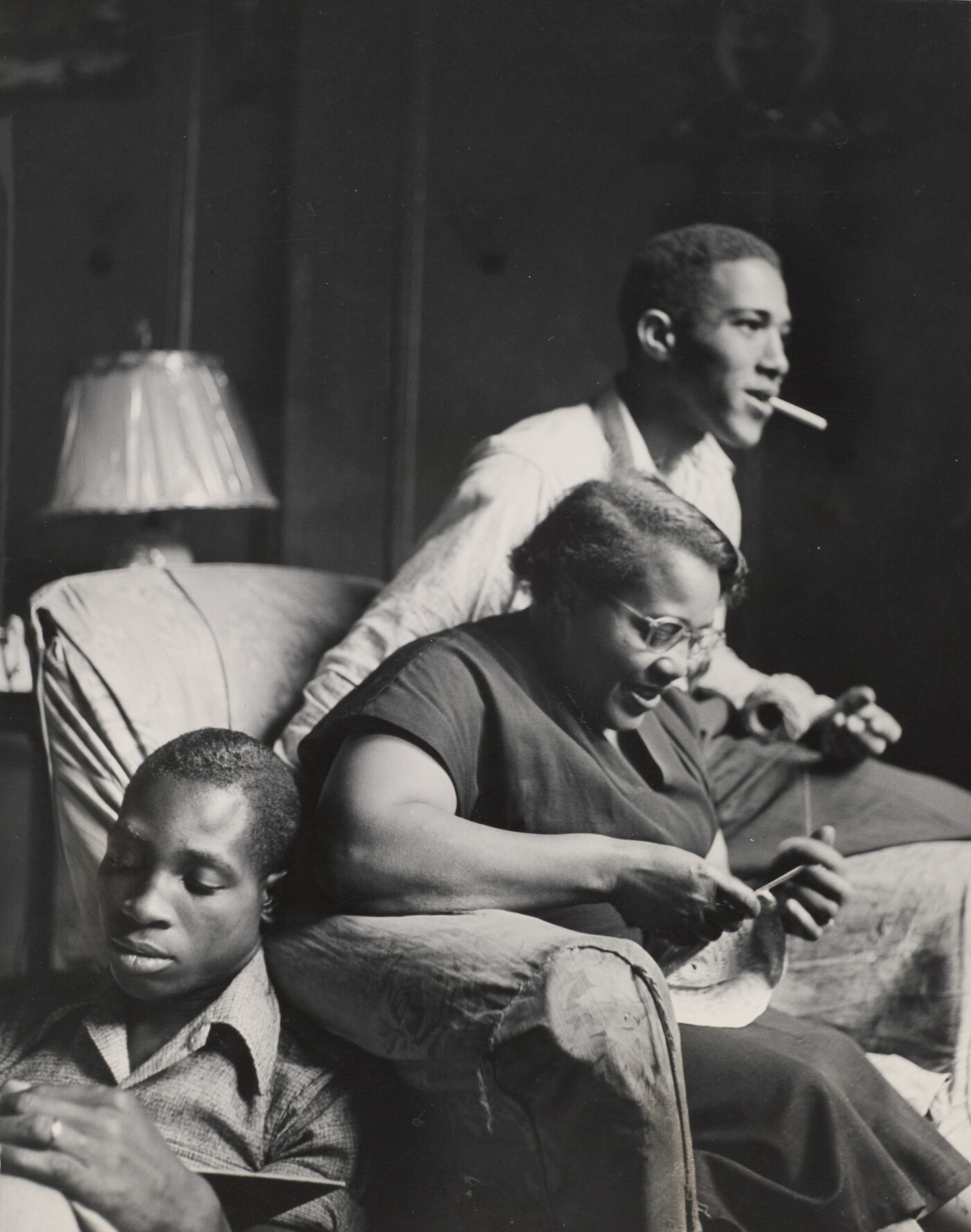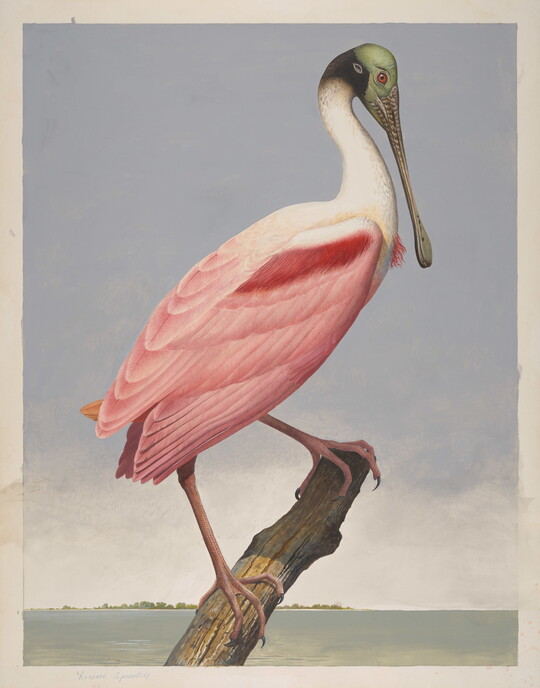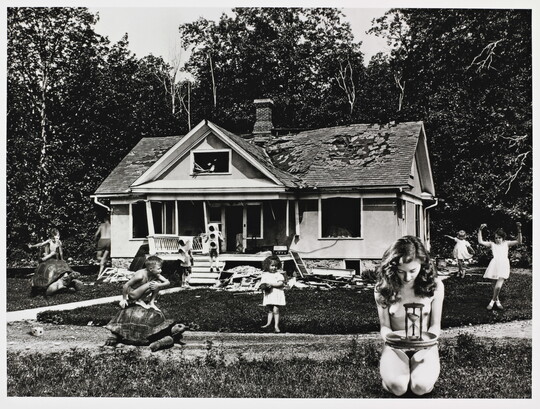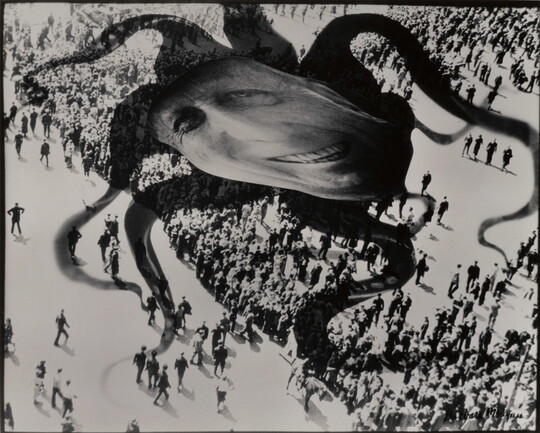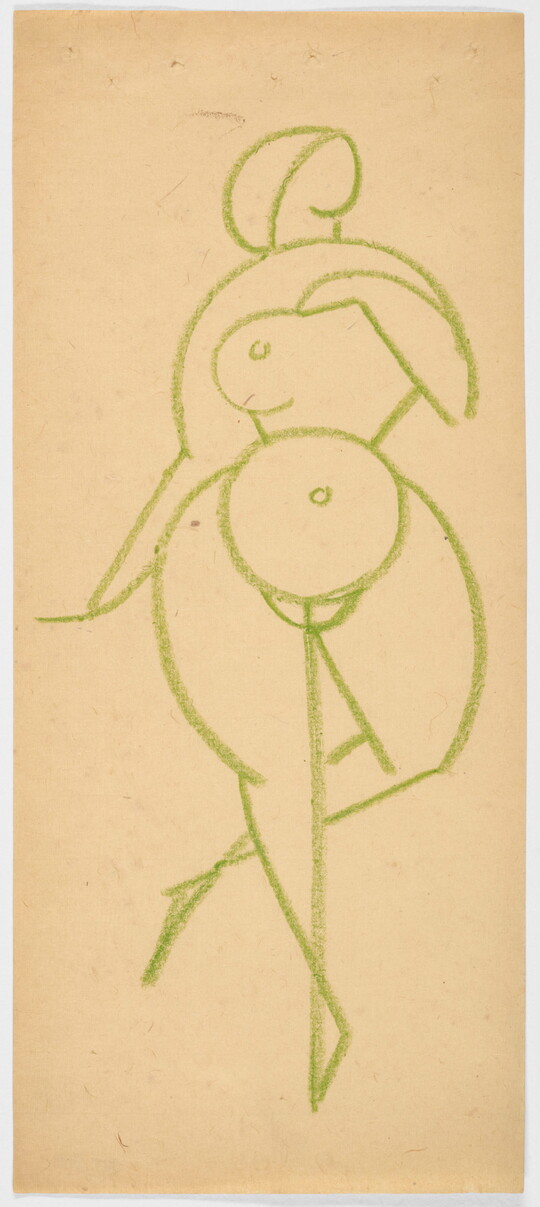

Artwork Image
Photo:
Controls
Red Jackson with His Mother and Brother, Harlem, New York
Object Details
-
Date
1948
-
Object Type
Photographs
-
Medium
Gelatin silver print
-
Dimensions
13 7/16 x 10 5/8 in.
-
Inscriptions
Verso:
u.l. in graphite: 1948 1-Page 95
u.c. printed in ink: LIFE PHOTO / BY / Gordon Parks [handwritten in graphite]
u.r. printed in ink: OCT 8 1945
c.r. on white label: N DIRECT TO / JOHNSON / M 5-01
c. in graphite: 1 neg 50% [enclosed in circle] / u [enclosed in circle]
c.r. in graphite: 53 / 00 / 10
c.r. in grease pencil: 66.3
c. in red grease pencil: G
l.l. printed in blue: 27655
l.l. in blue pencil: xRaces-Negroes / xYouth-US-Boys
l.c. printed in red ink: USED IN LIFE NOV 1 1948 P. 99 [in graphite]
l.c. in graphite: (r) [in blue pencil] LEONARD "RED" X [in blue pencil] JACKSON [underlined in blue pencil] holds ball of yarn / while his mother knits. His older brother / ARTHUR [underlined in blue pencil] X [in blue pencil] sketches. / Jackson (l) [in and underlined in blue pencil]
-
Credit Line
Amon Carter Museum of American Art, Fort Worth, Texas
-
Accession Number
P1998.33
-
Copyright
© The Gordon Parks Foundation
Object Description
At midcentury, magazines were the main path to photographic success and recognition. In 1948, a photo-essay by Gordon Parks called “Harlem Gang Leader” gained public acclaim, prompting Life to hire him as its first Black staff photographer. For the story, Parks spent weeks gaining the trust of Leonard “Red” Jackson, head of the Midtowners gang. He then documented Jackson’s complex world, where in one moment the teenager would be doing household chores and in the next holding war councils.
Parks had no control over the editing of the final photo-essay, which dwelt on violence and crime, de-emphasizing the neighborhood’s limited financial and educational opportunities and leaving out Jackson’s role as a community mediator who liaised with police and was named “Boy Mayor of Harlem.” In contrast, the hundreds of negatives Parks created reveal Jackson’s multifaceted life as containing violence but also love.
—Text taken from the Carter Handbook (2023)
-
American Photographs, 1845 to NowAugust 20, 2016–February 12, 2017
American Photographs brings together more than 70 photographs that span the history of the medium and reflect the diversity of photographic practices during America’s industrial development, highlighting the central role of photography in the United States.
-
Black Every Day: Photographs from the Carter CollectionJune 11–September 11, 2022
Exploring more than 100 years of photographic representations of Black American experiences, Black Every Day: Photographs from the Carter Collection includes over 50 historical and contemporary art photographs and over 100 vernacular images. Works by both iconic artists and unidentified community members showcase the everyday moments of Black life.
Additional details
Location: Off view
See more by Gordon Parks
Tags
Amon Carter Disclaimer
This information is published from the Carter's collection database. Updates and additions based on research and imaging activities are ongoing. The images, titles, and inscriptions are products of their time and are presented here as documentation, not as a reflection of the Carter’s values. If you have corrections or additional information about this object please email us to help us improve our records.
Every effort has been made to accurately determine the rights status of works and their images. Please email us if you have further information on the rights status of a work contrary or in addition to the information in our records.
Related Works
-
Roseate Spoonbill, ca. 1980-85
Scott Gentling, Stuart Gentling
Graphite, opaque and transparent watercolor on paper
2018.26
-
Untitled, 1970
Luchita Hurtado
Lithograph
1970.86
-
Drawing No. 18, 1919
Georgia O'Keeffe
Charcoal on paper
1997.2
-
The Time Game, 2011
Jane Hammond
Gelatin silver print
P2011.29
-
Eggs Encircled, 1948
Carlotta M. Corpron
Gelatin silver print
P1987.5.3
-
Untitled #52, 2002
Laura Letinsky
Dye coupler print
P2007.3
-
Steamfitter, 1921
Lewis Wickes Hine
Gelatin silver print
P1981.80.3
-
Hearst over the People, 1939
Barbara Morgan
Gelatin silver print
P1974.21.4
-
Green Nude, ca. 1920
Gaston Lachaise
Crayon on paper
2018.4
